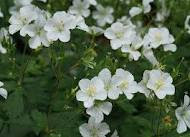The European wild cherry tree is the ancestor of all the cultivated cherry trees. It is different in many ways to its American cousin, Prunus serotina, as it is smaller, the flowers are completely different and the fruit is ripe when red (and sweet). It is a member of the Rosaceae or rose family making it a relative of apricots, peaches, plums, loquats, strawberries, raspberries, apples, pears, quinces, crab apples, almonds, silverweed, cinquefoil, Alpine Lady’s Mantle, avens, water avens and a whole host of other plants.
The wild cherries have been eaten for millennia and some cherry stones have been carbon-dated to 2077BC, so our ancestors were familiar with the fruit. The tree bears flowers in early April, before the leaves have formed, and this makes it a spectacular sight. The fruit is ripe in mid-summer, in June and July and the birds love to eat it. The hawksbill is especially good at breaking open the cherry stone to get at the edible almondy kernel.
 The fruit can be either sweet or sour, but never acidic and is used for making jellies, jam, preserves and wine.
The fruit can be either sweet or sour, but never acidic and is used for making jellies, jam, preserves and wine. A sticky resin exudes from the tree when the bark is cut and this sweet gum can be chewed like chewing gum. In traditional medicine it is given for persistent coughs, and is also believed to improve eyesight and give you a healthy flawless complexion.
Perhaps surprisingly it is the fruit stalks and bark (as well as the resin) that are used in medicine. The stalks are astringent, diuretic and used as a tonic. They have been used to treat diarrhoea, cystitis and other bladder infections, oedema, bronchial problems and anaemia. The bark only contains a small percentage (16 per cent approximately) of tannin, so is used in medicine in combination with the fruit stalks.
All cherry trees contain prunasin and amygdalen which convert to hydrocyanic acid (cyanide or prussic acid) in water. However in small doses this can stimulate the respiratory system, improve digestion and give an enhanced feeling of well-being. However in large doses it can prove fatal so is best left alone.
The fruit gives a grey-green dye, while the leaves produce a green one. The cherry tree wood is a rich red-brown which polishes well and is valued for furniture, musical instruments, carving and turnery.
In Britain there are two superstitions surrounding cherries, and the general one is that if you want to know when you will marry you count the stones on the plate in this way:-“This year, next year, sometime, never” and whatever you say when you get to the last stone tells you your fate.
 Another superstition only in
Another superstition only in There is a superstition in Switzerland which says that if the first fruit a cherry tree produces is eaten by a woman who has just had her first child, it will produce fruit in abundance throughout its life.
In the Ardennes region in France , children used to carry lighted torches into fruit orchards on the first Sunday of Lent and chant:-
“Bear apples, bear pears,
And cherries all black
To Scouvion!”
This is known in Britain as wassailing the fruit, but there it was only done with apple trees.
Nicholas Culpeper, the English herbalist, writing his Herball in the 17th century, had this to say of cherry trees: -
“Government and virtues. It is a tree of Venus. Cherries, as they are of different tastes, so they are of different qualities. The sweet pass through the stomach and the belly more speedily, but are of little nourishment; the tart or sour are more pleasing to an hot stomach, procure appetite to meat, and help to cut tough phlegm and gross humours; but when these are dried, they are more binding to the belly than when they are fresh, being cooling in hot diseases, and welcome to the stomach, and provoke urine. The gum of the cherry-tree, dissolved in wine, is good for a cold, cough, and hoarseness of the throat; mendeth the colour in the face, sharpeneth the eyesight, provoketh appetite, and helpeth to break and expel the stone; the black cherries bruised with the stones, and dissolved, the water thereof is much used to break the stone, and to expel gravel and wind.”































